#Luigi Chinetti
Text



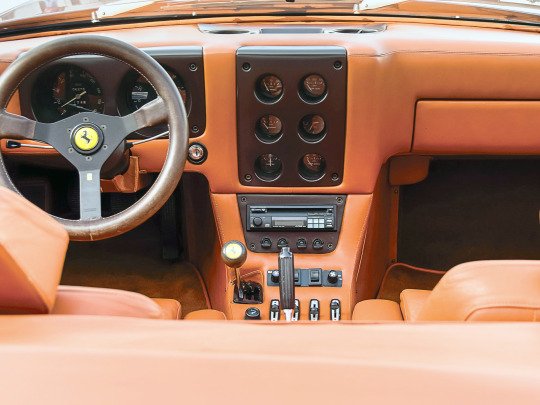
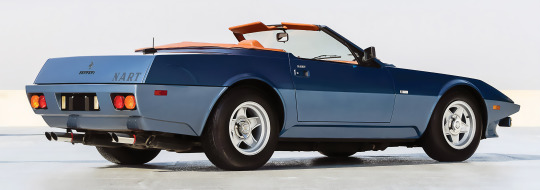

Ferrari 365 GTB/4 NART Spider, 1977 (1971), by Michelotti. Chassis no. #14299 left the Modena works in 1971 as a 365 "Daytona" and was delivered to a client in Greenwich, Connecticut. It was returned to Luigi Chinetti, Ferrari importer in the USA, in 1975. Chinetti sent the car, along with 2 other Daytonas, to Michelotti in Turin to be transformed into NART spiders. The other 2 cars we used for racing but #14299 was given as a present to Marion, Chinetti’s wife.
#Ferrari#Ferrari 365 GTB/4 NART Spider#Michelotti#coachbuilt#custom car#spider#open roof#Luigi Chinetti#special body
468 notes
·
View notes
Text

1966 Ferrari 365 P Berlinetta Speciale 4.4 litre V12
Although Ferrari was the first to win the F1 World Championship in the 60s with a mid-engined car, Enzo Ferrari was hesitant to offer road-going versions of these racers, particularly those powered by the big V12 engines. Sergio Pininfarina did see the potential of road going Ferrari with the trademark V12 mounted behind the driver. Although Ferrari was still not convinced, prominent Ferrari clients Luigi Chinetti and Gianni Agnelli were very interested and Pininfarina set about creating a spectacular new mid-engined Ferrari for the 1966 Paris Auto Show.
Ferrari provided the underpinnings for the new car, which were derived directly from the sports 330 P2 sports cars that raced at Le Mans. While these were powered by the latest twin-cam engines, they were usually re-fitted with a slightly larger, single-cam V12 when sold to customers like Chinetti. It was this 365 P specification that was also used for the new Pininfarina project.
The nose incorporated many familiar Ferrari/Pininfarina cues like the covered headlights and the egg-crate grill. At the rear, the 365 P featured the same buttresses that were found on the 1965 Dino show car. What really set the 365 P apart was its three-seater configuration with the driver placed in the middle, slightly forward of the passengers. This was made possible due to the lack of a transmission tunnel, which gave the car a flat floor. The central driving position also added a real single seater (Formula 1) feel to the car. To get in and out of the car more easily, the driver seat swivelled to the left, away from the gearshift lever. The unusual interior was clearly visible through the enormous glass roof fitted to the car. Finished in white, and dubbed the 'Tre Posti' for obvious reasons, the spectacular new show car made its debut at the 1966 Paris Auto Salon. It was subsequently shown at several more events around the world before being sold to its first owner in the United States through Luigi Chinetti.
#Ferrari 365 P Berlinetta Speciale#Ferrari 365 P Berlinetta#Ferrari 365 P#Ferrari 365#Ferrari#car#cars#Luigi Chinetti#pininfarina
33 notes
·
View notes
Text

Ferrari 365 GTB/4 Daytona Berlinetta 1971. Vendue neuve par Luigi Chinetti Motors, la belle fut exposée au Salon de Paris en 1968. Prix de vente : 500 000 $, soit 459 922 €. - source L'argus.
21 notes
·
View notes
Photo








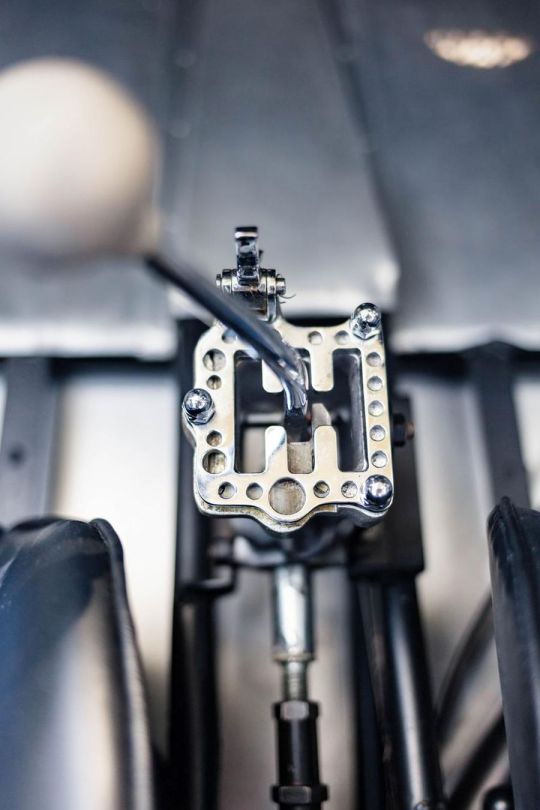

Ferrari 250 LM ( 1of 30)
It is a unit from the year 1964, with the chassis number #590 and which is one of the 10 units that survive of this model without suffering damage in its passage through the competition of the 32 that Ferrari came to produce of the model in its Maranello factory. Originally ordered in 1964 by Luigi Chinetti to compete under the colors of the NART (North American Racing Team) team in various series and races in the USA, the car was finally delivered brand new to its first owner in Philadelphia and recovered. later by Luigi Chineti to make it run in the 24 hours of Daytona, although the car would never compete on the track. It is therefore a truly exceptional unit, since it is not only in perfect condition, but its components are entirely original . Chassis, engine, gearbox, transmission and obviously the bodywork signed by Scaglietti are completely original. The 250 LM is one of the great myths of Ferrari. It was the last of the brand's models to win the podium at the 24 Hours of Le Mans in 1965 with Masten Gregory and Jochen Rindt at the wheel. That victory, Ferrari's ninth in the legendary endurance race, would close a brilliant cycle that began in 1960, in which the brand of the prancing horse would chain six consecutive victories at Le Mans. Despite this, the Ferrari 250 LM ultimately did not turn out to be the triumphant vehicle that Enzo Ferrari sought to put on the market as a Gran Turismo vehicle. . Its design is based on that of the 250 P prototype, integrating an additional roof into it that makes it a two-seater berlinetta. It maintains the tubular chassis, the same one that was mounted on the 250 LM from the second unit produced, as well as the iconic Ferrari V12 engine, in its 3,285 cm3 configuration with the V of its cylinder banks open at 60°. Certainly curious data if we look at the name of the vehicle, taken from the first unit produced, which did have a mechanical unit with only a 3-liter capacity, the only one with such a specification in the entire series produced. Atmospheric and with six double-body carburettors, the engine developed 320 CV of maximum power whose torque was transmitted to the asphalt through a 4 or 5-speed manual transmission arranged behind the rear axle of the vehicle.
57 notes
·
View notes
Text
Our Photographer
Standing in the street outside an inn is our then younger photographer, Louis Klemantaski. He is next to a Fiat 1100 S which will run the next day in the upcoming 24 Hours of Spa-Francorchamps. “Klem,” as he was affectionately known, was at the Spa 24 Hours to work with the Aston Martin team which would run a pair of DB2 Coupés and support another pair of prewar private Aston Martin Speed…

View On WordPress
#Aston Martin#Ferrari#Fiat#Jean Lucas#klemcoll#Louis Klemantaski#Luigi Chinetti#Spa-Francorchamps#sports car photographs
1 note
·
View note
Text

Ferrari 330 P3-4. Scuderia N.A.R.T.
0 notes
Text
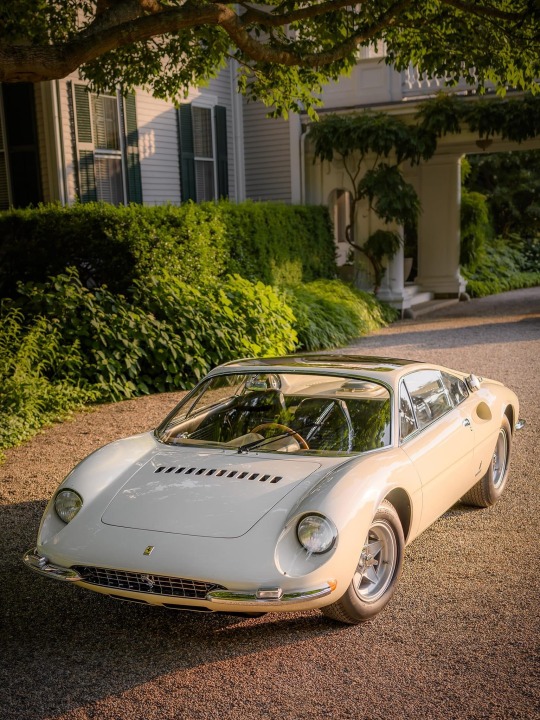
1966 Ferrari 365 P Berlinetta Speciale 4.4 litre V12
Although Ferrari was the first to win the F1 World Championship in the 60s with a mid-engined car, Enzo Ferrari was hesitant to offer road-going versions of these racers, particularly those powered by the big V12 engines. Sergio Pininfarina did see the potential of road going Ferrari with the trademark V12 mounted behind the driver. Although Ferrari was still not convinced, prominent Ferrari clients Luigi Chinetti and Gianni Agnelli were very interested and Pininfarina set about creating a spectacular new mid-engined Ferrari for the 1966 Paris Auto Show.
Ferrari provided the underpinnings for the new car, which were derived directly from the sports 330 P2 sports cars that raced at Le Mans. While these were powered by the latest twin-cam engines, they were usually re-fitted with a slightly larger, single-cam V12 when sold to customers like Chinetti. It was this 365 P specification that was also used for the new Pininfarina project.
The nose incorporated many familiar Ferrari/Pininfarina cues like the covered headlights and the egg-crate grill. At the rear, the 365 P featured the same buttresses that were found on the 1965 Dino show car. What really set the 365 P apart was its three-seater configuration with the driver placed in the middle, slightly forward of the passengers. This was made possible due to the lack of a transmission tunnel, which gave the car a flat floor. The central driving position also added a real single seater (Formula 1) feel to the car. To get in and out of the car more easily, the driver seat swivelled to the left, away from the gearshift lever. The unusual interior was clearly visible through the enormous glass roof fitted to the car. Finished in white, and dubbed the 'Tre Posti' for obvious reasons, the spectacular new show car made its debut at the 1966 Paris Auto Salon. It was subsequently shown at several more events around the world before being sold to its first owner in the United States through Luigi Chinetti.
#ferrari 365#berlinetta#ferrari#exotic car#dream car#sportscar#supercar#hypercar#luxury car#classic car#vintage car#muscle car#muscle cars#musclecar#musclecars#classic#vintage#aesthetic#aesthetics
535 notes
·
View notes
Text



1975 Ferrari 365 GTB-4 Daytona Shooting Break 'Panther' by Luigi (Coco) Chinetti.
65 notes
·
View notes
Photo
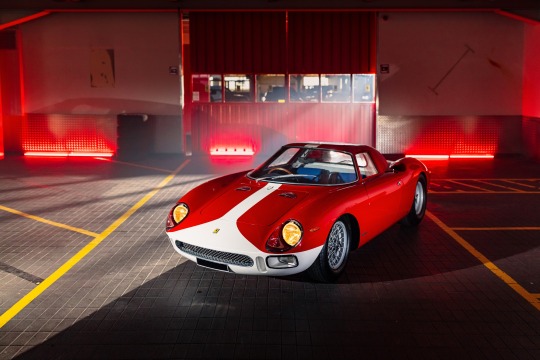




1964 Ferrari 250 LM
Introduced at the 1963 Paris Auto Show, the Ferrari 250 LM marked the Prancing Horse's redoubled efforts to win the 24 Hours of Le Mans.
Victory at Le Mans would come in 1965 with the North American Racing Team (NART) headed by hand-picked Ferrari importer three-time Le Mans winner Luigi Chinetti — last time Ferrari would take the overall win.
Only 32 of 250 LMs were produced, and this example, no. 5901, was the 10th built. It was purchased by NART but never raced. What it lacks in provenance it makes up for in perfection — the car has had a life of leisure no race car could imagine.
This 250 LM remains in immaculate condition, with it's original chassis, 3.3-liter V12, five-speed gearbox, and Pininfarina bodywork.
Courtesy: Artcurial
#art#design#sportcars#sportcar#vintagecars#vintagecar#ferrari#ferrari 250 LM#1964#collector's#pininfarina#artcurial#luxurycars#luxurycar#luxurylifestyle#le mans#NART
129 notes
·
View notes
Photo
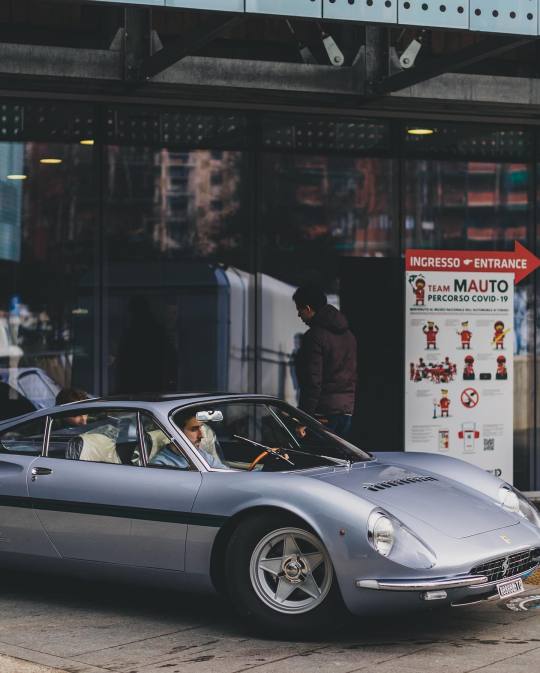


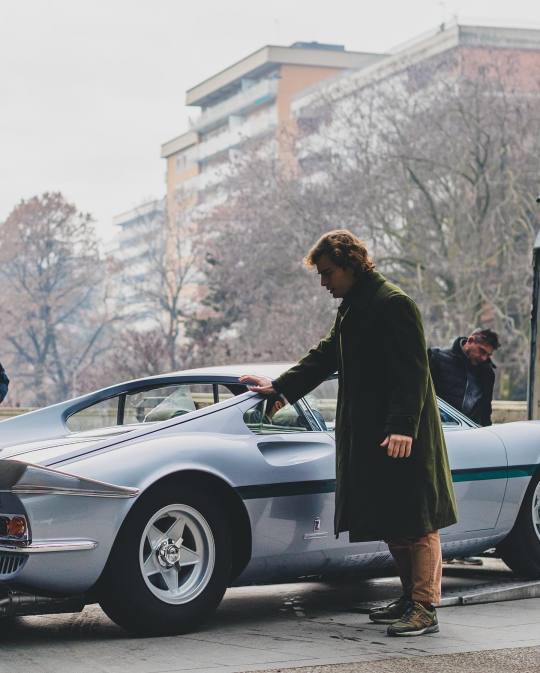
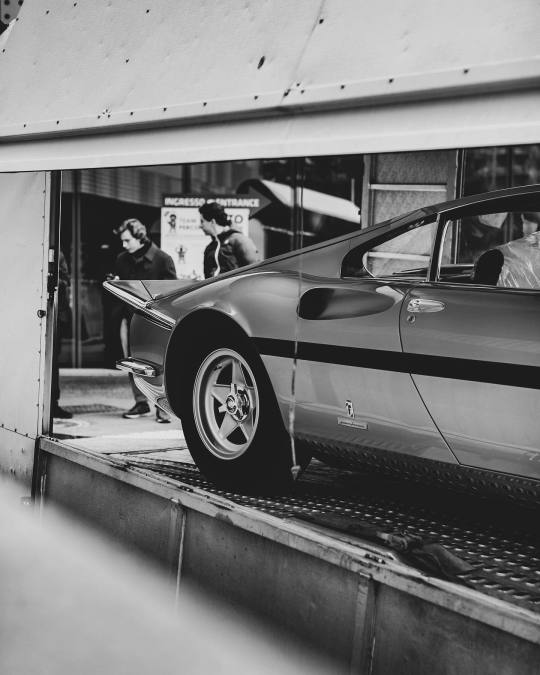


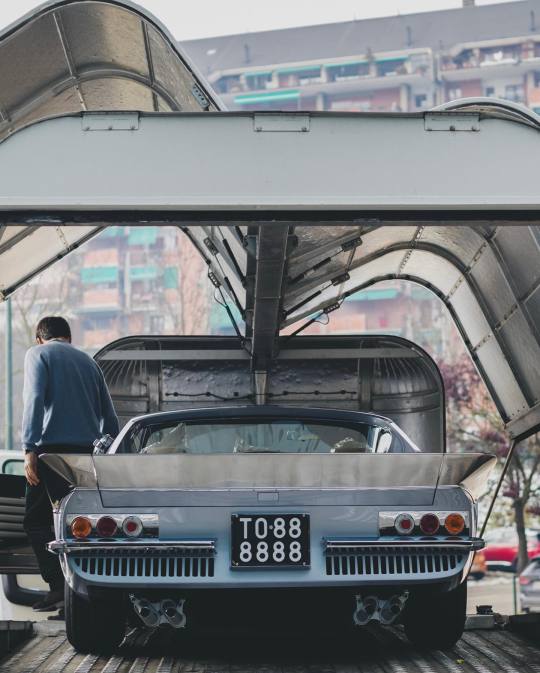
“It’s been five years since we tracked it down in a US storage facility. Four years since restoration began. Finally this week we unveiled the finished car in the home town of its first owner. It was the most challenging rebuild we’ve undertaken as no conventional build records exist: the Ferrari 365P ‘Tre Posti’ was a prototype built for Gianni Agnelli and never intended for production (although US Ferrari importer Luigi Chinetti subsequently ordered a second, slightly different ‘Bianco Gardenia’ example). You can immediately tell Agnelli’s car apart by its polished rear spoiler (“It weaved all over the autostrada at top speed without it” recalled Pininfarina’s Leonardo Fiovanti), the outside racing style fuel filler (“Agnelli loved details like that”) and of course L’Avvocato’s personal colours, including a light grey cloth interior which was woven near Biella to reproduce remains of the original found behind the door panels. The best detail of all, though, has to be Agnelli’s registration number, even more remarkable in a country where private plates aren’t supposed to exist. If anyone doubted who was the most influential person in Italy in 1966, the year he inherited control of Fiat and 4.4% of the country’s GDP, this probably gives a clue…“You could barely stop before you were surrounded by people” recalled Agnelli. Does anyone think we should try to recreate that on film in 2023?”
@kidstonmotorcars on Facebook
101 notes
·
View notes
Text










1969 Ferrari 365 GTB/4 Competición de Daytona
Las 24 Horas de Le Mans de 1971 fueron un enfrentamiento entre el advenedizo Porsche y su legendario 917 y el ganador establecido Ferrari y sus elegantes prototipos 512.
Nueve 512 y siete 917 se enfrentaron, con Porsche ocupando el primer y segundo lugar en la general y Ferrari conformándose con el tercero y cuarto. Pero lo que podría haber sido el resultado más impresionante de la carrera fue la quinta posición, reclamada por este Ferrari 365 GTB/4 Daytona Competizione.
El automóvil aquí se terminó el 28 de abril de 1969 como un automóvil de carretera con carrocería de acero: el tercero fabricado en Daytona y nunca salió de la fábrica de Ferrari. Se mantuvo como mula de prueba durante dos años, y el 26 de abril de 1971, el equipo de carreras norteamericano de Luigi Chinetti solicitó que Ferrari convirtiera el chasis no. 12467 con especificaciones de carreras, con la vista puesta en Le Mans. Se conservó la carrocería de acero, con un tapón de llenado de combustible expuesto, faros fijos, ventanas laterales de plexiglás, un alerón delantero y guardabarros para cubrir enormes ruedas delanteras de 8 pulgadas y traseras de 9 pulgadas, junto con un puñado de otras especificaciones de carrera.
El mismo Chinetti tomó la primera parte de la carrera, con el Daytona subiendo al quinto lugar general en la hora 19, y el resto es historia. El auto continuaría compitiendo años después, logrando un segundo lugar en la general en su carrera homónima: las 24 Horas de Daytona de 1979. Una pieza importante de la historia de Ferrari, el automóvil ahora está a la venta por RM Sotheby's.
3 notes
·
View notes
Text
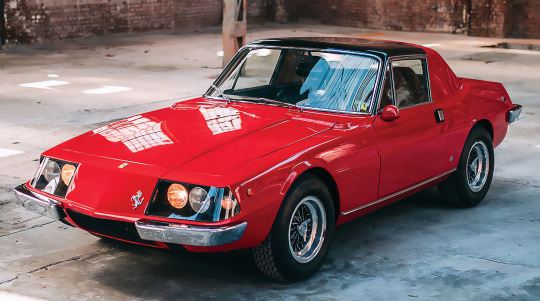

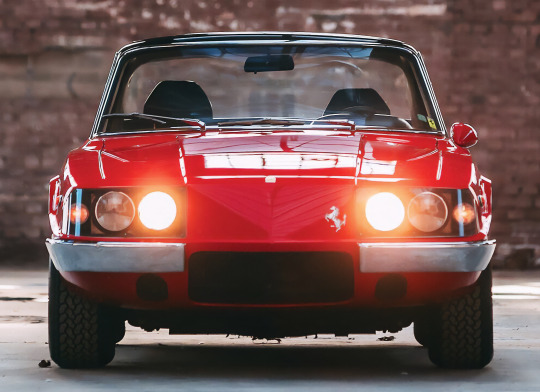
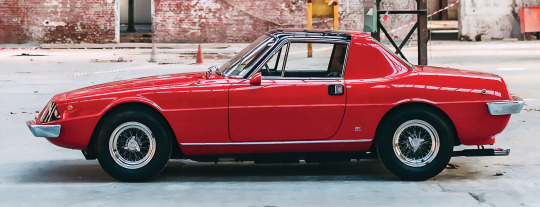


Geneva ‘74 50 years on: Ferrari 330 GTC, by Zagato. Presented on Zagato's stand at the 44th Geneva Motor Show, half a century ago. The car was a 1967 330 GTC that had been exported to the US but after an accident US Ferrari importer Luigi Chinetti sent the damaged car back to Italy, where is was rebuilt by Zagato with unique bodywork designed by Giuseppe Mittino. It featured a targa-style removable roof
#Geneva 74#50 years ago#Zagato#Ferrari#Ferrari 330 GTC#1967#44th Geneva Motor Show#1974#one-off#concept#prototype#design study#targa#Giuseppe Mittino#Luigi Chinetti#custom car
199 notes
·
View notes
Text

Cadillac Pininfarina Cabriolet Speciale, 1954






Pininfarina special Cadillac Sport roadster for Luigi Chinetti, NY Ferrari importer.
17 notes
·
View notes
Text
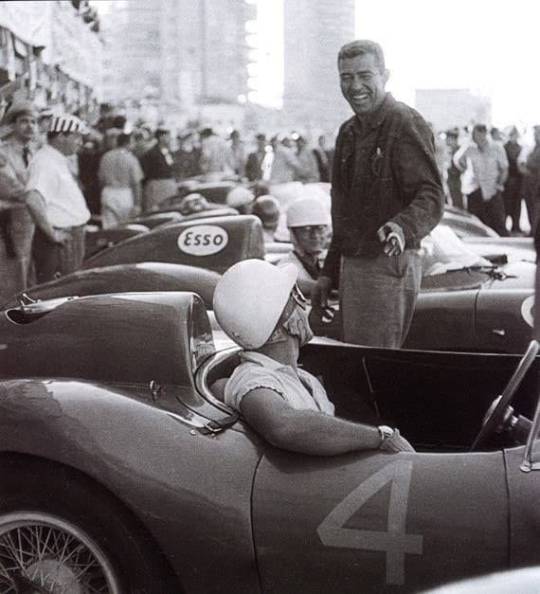
Carroll Shelby plaisante avec le futur vainqueur de la course Stirling Moss sur Ferrari 335 Sport de Luigi Chinetti au Grand Prix de Cuba - La Havane 1958. Photo : Pinterest. - source UK Racing History.
Grand prix marqué par l'enlèvement de Fangio enlevé à son hôtel par un homme armé et l'accident meurtrier d'Armando García Cifuentes (Ferrari) qui fit six morts et trente blessés graves.
youtube
#grand prix de cuba#la havane#stirling moss#carroll shelby#ferrari#luigi chinetti#armando garcia cifuentes#Youtube#juan manuel fangio
34 notes
·
View notes
Text
There's A Rare Ferrari 250 GT LWB California Spider For Sale
The Ferrari 250 GT California Spider was actually the brainchild of an American named John von Neumann, he was a California-based importer who had the ear of Ferrari’s main man in the USA – Luigi Chinetti.
What von Neumann asked for was a high-performance Ferrari convertible that could be driven to the track on weekends, raced all day, and then driven home afterwards. Chinetti thought this was a…

View On WordPress
2 notes
·
View notes
Text
The Other Driver
Here is Lord Selsdon (actually Patrick Peter McEacharn Mitchell-Thomson, the second Baron Selsdon) in his Ferrari 166 MM after winning the Le Mans 24 Hours on June 26, 1949. Selsdon had driven numerous times at Brooklands in the prewar years and had also driven at Le Mans in 1938 and again in 1939, finishing fourth overall.
As is well known, Lord Selsdon had an even more experienced Le Mans…

View On WordPress
#Ferrari#grand prix photographs#klemcoll#Le Mans#Lord Selsdon#Luigi Chinetti#motorsports#sports car photographs#Vincent Auriol
0 notes